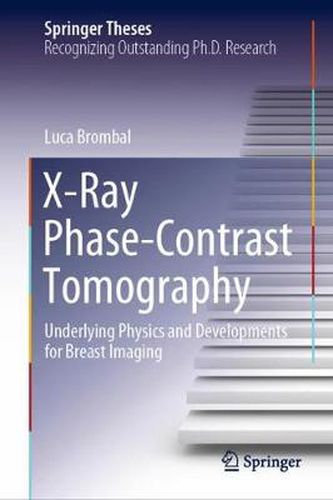Readings Newsletter
Become a Readings Member to make your shopping experience even easier.
Sign in or sign up for free!
You’re not far away from qualifying for FREE standard shipping within Australia
You’ve qualified for FREE standard shipping within Australia
The cart is loading…






This title is printed to order. This book may have been self-published. If so, we cannot guarantee the quality of the content. In the main most books will have gone through the editing process however some may not. We therefore suggest that you be aware of this before ordering this book. If in doubt check either the author or publisher’s details as we are unable to accept any returns unless they are faulty. Please contact us if you have any questions.
X-ray imaging is a corner stone of breast cancer diagnosis. By exploiting the phase shift of X-rays rather than their attenuation, phase-contrast tomography has the potential to dramatically increase the visibility of small and low contrast features, thus leading to better diagnosis. This thesis presents research on the first synchrotron-based project developing a clinical phase-contrast breast computed tomography (CT) setup at Elettra, the Italian Syncrotron Radiation Facility. This book includes a comprehensive theoretical background on propagation-based phase-contrast imaging, exploring and extending the most recent image formation models. Along with theory, many practical implementation and optimization issues, ranging from detector-specific processing to setup geometry, are tackled on the basis of a large number of experimental evidences. Most of the modelling results and data analysis have general validity, being a valuable framework for optimization of phase-contrast setups. Results obtained at synchrotron are also compared with real world laboratory sources: both a first-of-its-kind comparison with one of the few hospital breast CT systems and a state-of-the-art implementation of monochromatic phase-contrast micro-tomography with a conventional rotating anode source are presented. On a more general level, this work sheds a light on the importance of synchrotron-based clinical programs, which are key to trigger the long-anticipated transition of phase-contrast imaging from synchrotrons to hospitals.
$9.00 standard shipping within Australia
FREE standard shipping within Australia for orders over $100.00
Express & International shipping calculated at checkout
This title is printed to order. This book may have been self-published. If so, we cannot guarantee the quality of the content. In the main most books will have gone through the editing process however some may not. We therefore suggest that you be aware of this before ordering this book. If in doubt check either the author or publisher’s details as we are unable to accept any returns unless they are faulty. Please contact us if you have any questions.
X-ray imaging is a corner stone of breast cancer diagnosis. By exploiting the phase shift of X-rays rather than their attenuation, phase-contrast tomography has the potential to dramatically increase the visibility of small and low contrast features, thus leading to better diagnosis. This thesis presents research on the first synchrotron-based project developing a clinical phase-contrast breast computed tomography (CT) setup at Elettra, the Italian Syncrotron Radiation Facility. This book includes a comprehensive theoretical background on propagation-based phase-contrast imaging, exploring and extending the most recent image formation models. Along with theory, many practical implementation and optimization issues, ranging from detector-specific processing to setup geometry, are tackled on the basis of a large number of experimental evidences. Most of the modelling results and data analysis have general validity, being a valuable framework for optimization of phase-contrast setups. Results obtained at synchrotron are also compared with real world laboratory sources: both a first-of-its-kind comparison with one of the few hospital breast CT systems and a state-of-the-art implementation of monochromatic phase-contrast micro-tomography with a conventional rotating anode source are presented. On a more general level, this work sheds a light on the importance of synchrotron-based clinical programs, which are key to trigger the long-anticipated transition of phase-contrast imaging from synchrotrons to hospitals.